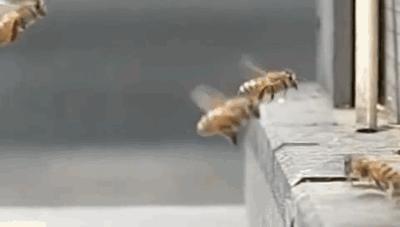
Originally Posted by
N. W. M. van Buren, A. G. H. MariŽn, H. H. W. Velthuis
It is claimed that Perizin, a pesticide to control the mite Varroa jacobsoni, acts systemically and is distributed by trophallaxis of the bees. We studied the role of trophallactic interactions in the distribution of coumaphos, the active ingredient, among the colony members and whether coumaphos can reach all mites by systemic activity. Colonies were divided into three compartments by a screen, one receiving a Perizin treatment by sprinkling, the others receiving no Perizin. In this way it was possible to trace the amount of coumaphos transferred between bees through the screen from the treated part to the untreated one by trophallaxis. After different periods of time the number of fallen mites was counted and the amount of coumaphos in bees was determined for all hive compartments. We found that trophallactic interactions are of minor importance in the distribution of Perizin between the two compartments. The recommended method of sprinkling Perizin over the bees was shown to be very inefficient; only 24% of the applied amount reaches the alimentary canal of the bees; the rest must therefore remain at other places: on the outside of the bees, in the combs and on the hive-parts.
Originally Posted by N. W. M. van Buren, A. G. H. MariŽn, H. H. W. Velthuis




 Reply With Quote
Reply With Quote


Bookmarks